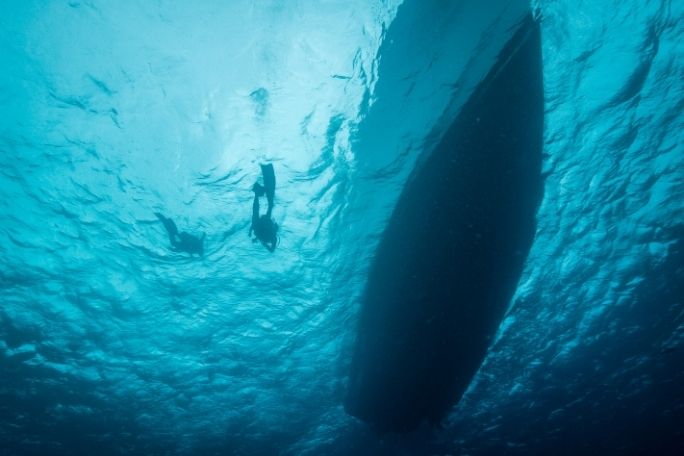Lesson summary
This lesson incorporates clips from Blue The Film as learning inspiration. During this lesson, students learn about the significance of unsustainable fishing practices on our oceans. They begin by investigating the meaning of both sustainable and unsustainable, and work in groups to look at some of the unsustainable fishing practices currently in use. Students then take part in a group STEM innovation challenge to design a fishing device that reduces by-catch and protects our oceans.
Learning intentions:
Students will...
- understand what unsustainable fishing practices are and how they can negatively impact the oceans
- identify sustainable fishing practices and understand how they would benefit the oceans.
Success criteria:
Students can...
- understand what overfishing is and why it is a problem in our oceans
- think of creative solutions to the problem presented
- use technology as part of their solution
- work collaboratively with others to solve a problem
- express ideas as part of a group
- design using STEM techniques.
Lesson guides and printables
Lesson details
Curriculum mapping
Australian Curriculum content descriptions:
Year 5 & 6 Design and Technologies:
- Examine how people in design and technologies occupations address competing considerations, including sustainability in the design of products, services, and environments for current and future use (ACTDEK019)
- Investigate characteristics and properties of a range of materials, systems, components, tools and equipment and evaluate the impact of their use (ACTDEK023)
Syllabus outcomes: ST3-14BE, ST3-15I, ST3-16P, ST3-13MW.
General capabilities: Critical and Creative Thinking.
Cross-curriculum priority: Sustainability OI.1.
Relevant parts of Year 5 & 6 Design and Technologies achievement standards: Students describe competing considerations in the design of products, services and environments, taking into account sustainability. They describe how design and technologies contribute to meeting present and future needs.
Unit of work: Blue The Film: Inquiry – Years 5 & 6.
Time required: 60 mins.
Level of teacher scaffolding: High – lead students in discussions and design challenge.
Resources required
- Student Worksheet – one copy per student
- Device capable of presenting a website to the class
- A3 paper and pens/pencils for drawing designs
- Devices for conducting online research
Skills
This lesson is designed to build students’ competencies in the following skills:
- Collaboration
- Communication
- Critical thinking
- Creativity
- Collaboration
- Problem solving
- Global citizenship
Additional info
Blue is a feature documentary film charting the drastic decline in the health of our oceans. With more than half of all marine life lost and the expansion of the industrialization of the seas, the film sets out the challenges we are facing and the opportunities for positive change. Blue changes the way we think about our liquid world and inspires the audience to action. Find out how to screen or download the film here. Along with the film is an ambitious global campaign to create advocacy and behaviour change through the #oceanguardian movement. To become an ocean guardian, see the website.


Welcome back!
Don't have an account yet?
Log in with:
By signing up to Cool.org you consent and agree to Cool's privacy policy to
store, manage and process your personal information. To read more, please see
our privacy policy here(Opens in new tab).
Create your free Cool.org account.
Many of our resources are free, with an option to upgrade to Cool+ for premium content.
Already have an account?
Sign up with:
By signing up to Cool.org you consent and agree to Cool's privacy policy to
store, manage and process your personal information. To read more, please see
our privacy policy here(Opens in new tab).